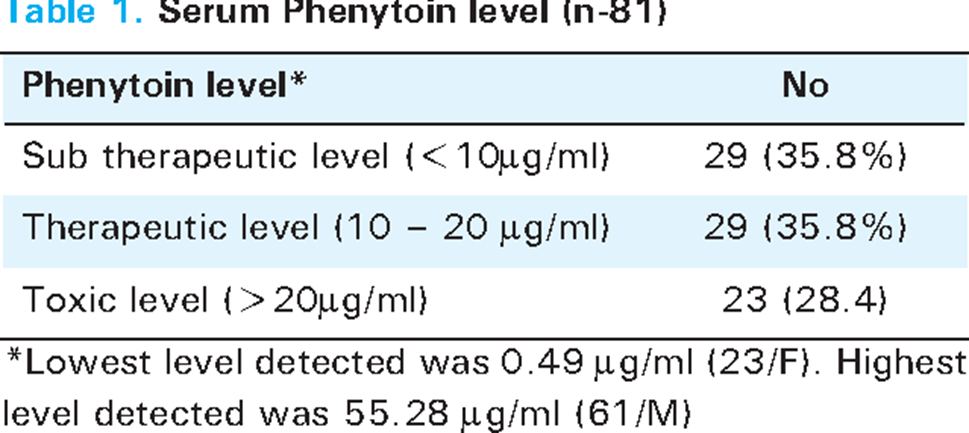During a routine appointment, a patient with a history of seizures is found to have a phenytoin level of 23 mcg/mL. What concern will the nurse have, if any?
The drug level is at a toxic level, and the dosage needs to be reduced.
The patient's seizures should be under control if she is also taking a second antiepileptic drug.
The patient is at risk for seizures because the drug level is not at a therapeutic level.
The patient's seizures should be under control because this is a therapeutic drug level.
The Correct Answer is A
A. The drug level is at a toxic level, and the dosage needs to be reduced. Phenytoin has a narrow therapeutic range, and levels above 20 mcg/mL are considered to be in the toxic range.
Symptoms of phenytoin toxicity can include nystagmus, ataxia, slurred speech, and confusion. Therefore, if a patient's phenytoin level is 23 mcg/mL, the nurse should be concerned about potential toxicity and consult with the healthcare provider to adjust the dosage.
B. The patient's seizures should be under control if she is also taking a second antiepileptic drug.
While combination therapy with multiple antiepileptic drugs can help control seizures, a phenytoin level of 23 mcg/mL is still concerning for toxicity and requires intervention.
C. The patient is at risk for seizures because the drug level is not at a therapeutic level. A phenytoin level of 23 mcg/mL is actually above the therapeutic range and is more indicative of toxicity rather than subtherapeutic levels.
D. The patient's seizures should be under control because this is a therapeutic drug level. A phenytoin level of 23 mcg/mL is not within the therapeutic range but rather in the toxic range, so the patient may experience symptoms of toxicity rather than having adequate seizure control.

Nursing Test Bank
Naxlex Comprehensive Predictor Exams
Related Questions
Correct Answer is A
Explanation
A. The patient's respiratory rate: Morphine sulfate is an opioid analgesic that can cause
respiratory depression as a side effect. Therefore, assessing the patient's respiratory rate is crucial before administering the medication to ensure it is within normal limits.
B. The appearance of the incision: While assessing the incision is important for overall surgical site assessment, it's not directly related to the administration of morphine sulfate.
C. The date of the patient's last bowel movement: Bowel movements may be impacted by anesthesia and surgery, but they are not directly relevant to assessing the safety of administering morphine sulfate.
D. The patient's pulse rate: Pulse rate is important for overall assessment of the patient's
condition but may not directly indicate the need for or safety of administering morphine sulfate.
Correct Answer is A
Explanation
A. Dantrolene injection, a skeletal muscle relaxant: The patient is exhibiting signs of malignant hyperthermia, a potentially life-threatening complication of anesthesia. Dantrolene is the primary treatment for malignant hyperthermia as it acts as a skeletal muscle relaxant, reducing muscle rigidity and hypermetabolism associated with the condition.
B. Cardiopulmonary resuscitation (CPR) and intubation: While the patient is experiencing significant physiological distress, initiating CPR and intubation would be premature without first addressing the underlying cause, which appears to be malignant hyperthermia.
C. An anticholinesterase drug, such as neostigmine: Anticholinesterase drugs like neostigmine are not indicated for the treatment of malignant hyperthermia.
D. Naltrexone hydrochloride injection, an opioid reversal drug: Naltrexone is used for opioid overdose reversal and is not appropriate for the treatment of malignant hyperthermia.
Whether you are a student looking to ace your exams or a practicing nurse seeking to enhance your expertise , our nursing education contents will empower you with the confidence and competence to make a difference in the lives of patients and become a respected leader in the healthcare field.
Visit Naxlex, invest in your future and unlock endless possibilities with our unparalleled nursing education contents today
Report Wrong Answer on the Current Question
Do you disagree with the answer? If yes, what is your expected answer? Explain.
Kindly be descriptive with the issue you are facing.
